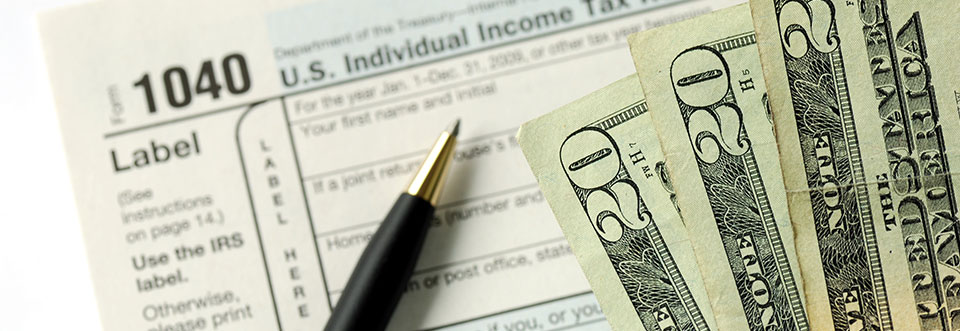Tax Benefits of Homeownership | Part 2
Being a homeowner does have its advantages!

Tax Season starts January 23 – We want to make sure that you are considering all the possible tax advantages available to you, so don’t miss out on these other deductions for homeowners! Whether you recently made improvements for medical reasons, used part of your home for business purposes, rented out part of your home, have home buying expenses, or sold your home – you may qualify for one or more of the following tax deductions.

Did you make home improvements based upon medical reasons?
If you improved accessibility for yourself or someone in your home who needs medical care, you can include in medical expense amounts you pay for special equipment installed in a home, or for improvements, if their main purpose is medical care for you, your spouse, or a dependent. The cost of permanent improvements that increase the value of your property may be partly included as a medical expense. The cost of the improvement is reduced by the increase in the value of your property. The difference is a medical expense. If the value of your property isn’t increased by the improvement, the entire cost is included as a medical expense.
Certain improvements made to accommodate a home to your disabled condition, or that of your spouse or your dependents who live with you, don’t usually increase the value of the home and the cost can be included in full as medical expenses. These improvements include, but aren’t limited to, the following items.
- Constructing entrance or exit ramps for your home.
- Widening doorways at entrances or exits to your home.
- Widening or otherwise modifying hallways and interior doorways.
- Installing railings, support bars, or other modifications to bathrooms.
- Lowering or modifying kitchen cabinets and equipment.
- Moving or modifying electrical outlets and fixtures.
- Installing porch lifts and other forms of lifts (but elevators generally add value to the house).
- Modifying fire alarms, smoke detectors, and other warning systems.
- Modifying stairways.
- Adding handrails or grab bars anywhere (whether or not in bathrooms).
- Modifying hardware on doors.
- Modifying areas in front of entrance and exit doorways.
- Grading the ground to provide access to the residence.
Only reasonable costs to accommodate a home to a disabled condition are considered medical care. Additional costs for personal motives, such as for architectural or aesthetic reasons, aren’t medical expenses. Check with your tax advisor to see what deductions you are eligible for.
(Source: IRS.Gov)
Do you use part of your home for business?
You may qualify for the Home Office Deduction if you have a legitimate business, can provide proof that your home is your principal place of business, and use part of your home exclusively and regularly for the business. If you qualify for this deduction, you can deduct 100% of the cost of improvements you make just to your home office. For example, if you use a bedroom in your home as a home office and pay a carpenter to install built-in bookshelves, you may depreciate the entire cost as business expense. Improvements that benefit your entire home are depreciable according to the percentage of home office use. For example, if you use 20% of your home as an office, you may depreciate 20% of the cost to upgrade your home heating and air conditioning system. Other restrictions do apply, so make sure to check with your tax advisor to determine your own eligibility or visit IRS.Gov for more information about this deduction.
(Source: IRS.Gov)
Did you rent out part of your home?
Another way to depreciate home improvement costs is to rent out a portion of your home. This enables you to depreciate the expense as a rental expense, and the amount is deducted from the rental income you receive.
If you rent part of your property, you must divide certain expenses between the part of the property used for rental purposes and the part of the property used for personal purposes, as though you actually had two separate pieces of property.
You can deduct the expenses related to the part of the property used for rental purposes, such as home mortgage interest, qualified mortgage insurance premiums, and real estate taxes, as rental expenses on Schedule E (Form 1040). You can also deduct as rental expenses a portion of other expenses that normally are nondeductible personal expenses, such as expenses for electricity or painting the outside of the house.
There is no change in the types of expenses deductible for the personal-use part of your property. Generally, these expenses may be deducted only if you itemize your deductions on Schedule A (Form 1040). Be sure to check with your tax advisor to find out if you qualify and are eligible for this deduction.
(Source: IRS.Gov)
What cannot be deducted?
Not everything associated with buying or selling a home or homeownership can be deducted. Here are several things you may not be able to claim a deduction for on your taxes.
- Most of you closing and settlement costs (including, but not limited to: forfeited deposits, down payments, or earnest money)
- Home appraisal fees
- Homeowners’ association dues
- Insurance premiums (including, but not limited to: fire, flood, or title insurance payments)
- Additional amounts paid to reduce your mortgage principal
- The cost of utilities (including, but not limited to: electricity, water, and gas)
- General home improvement, repairs and maintenance expenses. Though they might not be eligible for a deduction, save your receipts. The cost of your improvements may reduce your taxable gain, thus reducing the amount of gain you will be responsible for when you sell your home.
(Source: IRS.GOV)
How much will you save?
The actual amount of how much you will save is based upon several factors:
- Your taxable income
- How you file (example: head of household, single, married filing jointly or married filing separately)
- Your standard deduction amount
- Other itemized deductions you are claiming
Tax rules change frequently and you may be able to qualify for other deductions. Now is the time to meet with your accountant or tax advisor to discuss all of the possible deductions you could receive.

